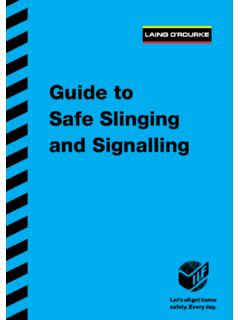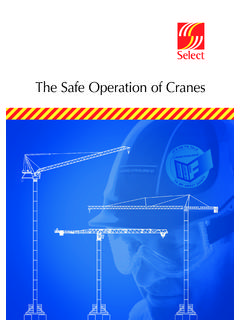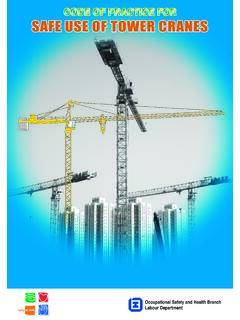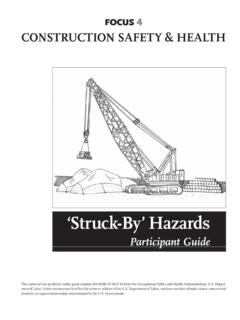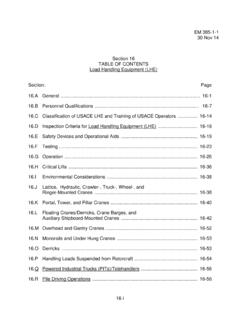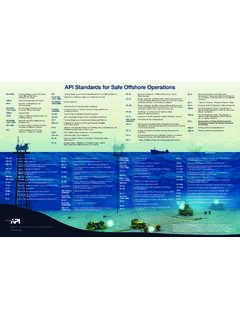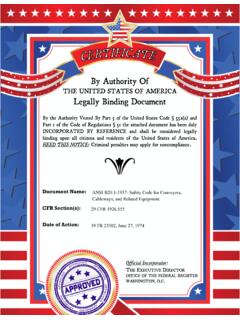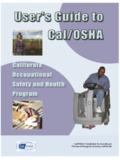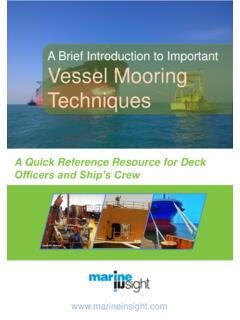Transcription of Preventing accidents during lifting operations
1 Preventing accidents during lifting operationsPlanning - Applying the Hierarchy of Risk ControlsLinksManagerWorker1) Are you competent to manage a lifting operation? Consider whether you need competent advice or a contract lift2) Ensure that a competent person prepares a lifting plan3) Prepare the site, eliminate risks where possible4) Ensure everyone involved in the lift and, those affected, are properly briefed5) Double check that safety precautions are in place before the lifting starts6) Define exclusion zones around lifting operations , and make sure people stay out of ) Using a crane can eliminate, or substantially reduce site risks related to manual handling and mobile plant. However, lifting operations often present severe risks in themselves, which must be controlled.
2 The main measures you must take include: a) lifting operations involving a crane require a trained operator, a trained slinger/signaller, and a lifting plan drawn up by a competent person. b) Exclusion zones should be established and loads should not be lifted over people working underneath. Organise unloading so that it takes place away from pedestrian areas. c) All lifting accessories should have a certificate or marking indicating they have been thoroughly examined in the last 6 months d) The lifting operation should be appropriately supervised2) Ensure that the lifting operations are properly co-ordinated, so all trades working on site know about the operation, and not put to ) Before starting work, make sure you have been properly briefed2) Take the time to check the lifting plan against what you actually see on site3) Check the method of work with your supervisor and raise any concerns 4) Only act as a slinger/signaller if you are trained,authorised and competent to do so5) Work to the standard hand signals, and ensure that you understand your role in the operation6)
3 Do not enter an exclusion from Step 3 of the Leadership and Worker Engagement Toolkit Published online by the Health and Safety Executive guidance from HSE lifting operations Guidance on safe use of Lorry you are not experienced at managing lifting operations , consider a contract lift see industry guidance on crane hire Concerns Raised At The BriefingChanges implemented or actions plannedSLAMR ecord your Site Briefing HereWho has been briefedI confirm that I have briefed these people on the Key points of the HSE Step3 guidance note on behaviours that can prevent accidentsSigned off bySTOP work if you find yourself in danger - this is your right in LawLook around you before taking any action, is anybody else at riskAssess the situation, take a few minutes to think through the actions you should take to put things rightManage the risks as the job goes on, anticipate and control risk before the problem emerges Guidance from Step 3 of the Leadership and Worker Engagement Toolkit Published online by the Health and Safety Executive










